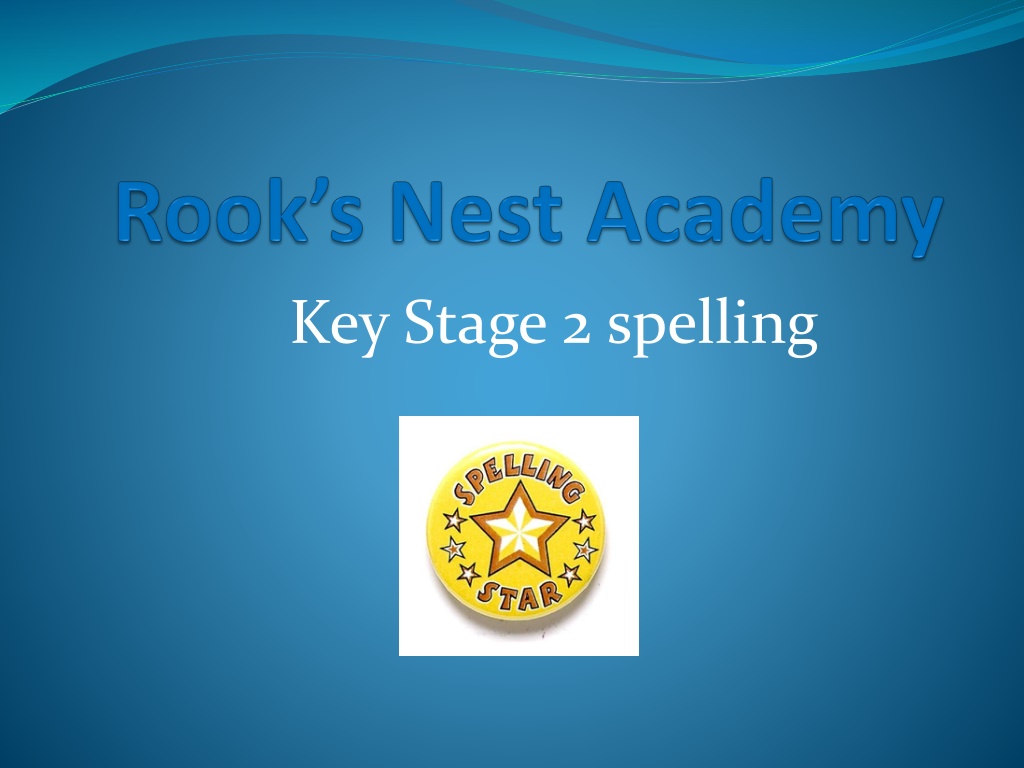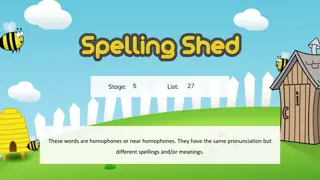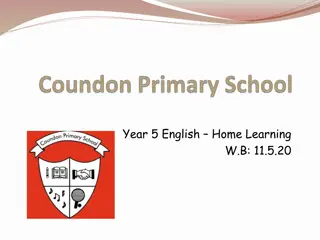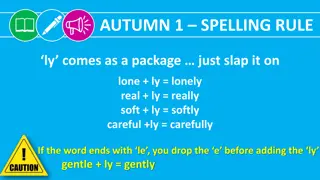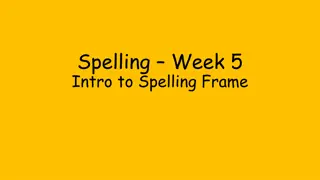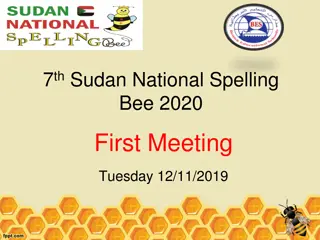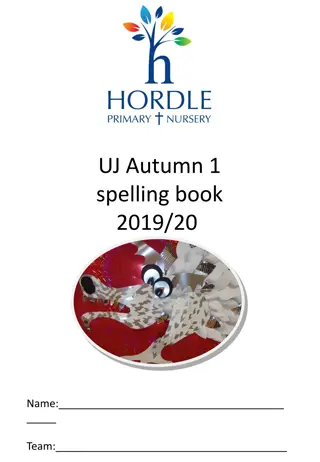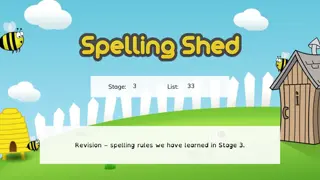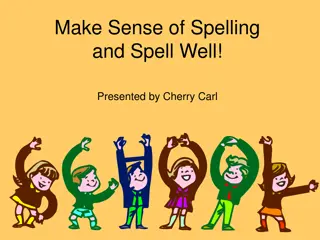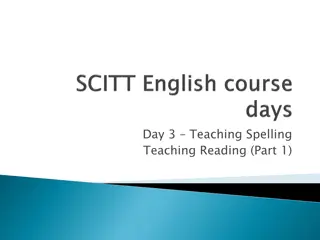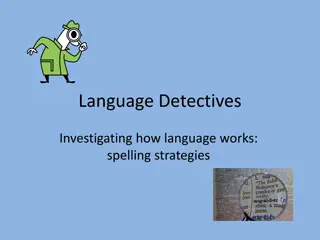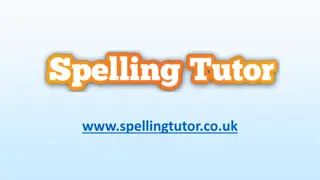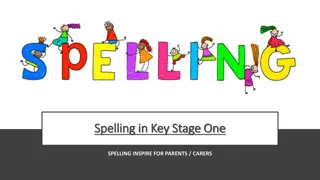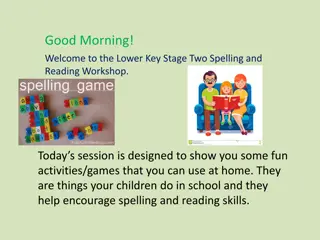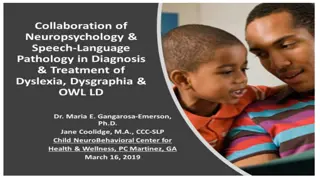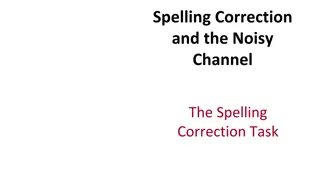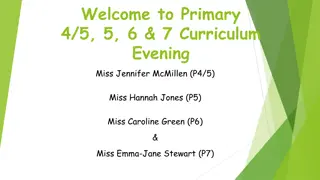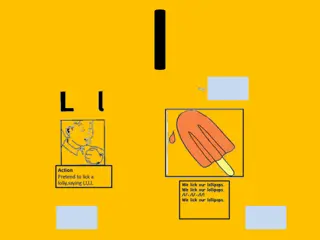Understanding the Process of Learning Spelling in Key Stage 2
Spelling psychologists have debunked the theory of rote visual memory in children's spelling. Instead, understanding key processes and word structures is crucial. Rooks Nest Academy emphasizes teaching spelling patterns through short daily activities. Year by year, students learn to spell with prefixes, homophones, and commonly misspelled words, expanding their spelling strategies and knowledge in a structured manner.
Download Presentation

Please find below an Image/Link to download the presentation.
The content on the website is provided AS IS for your information and personal use only. It may not be sold, licensed, or shared on other websites without obtaining consent from the author. Download presentation by click this link. If you encounter any issues during the download, it is possible that the publisher has removed the file from their server.
E N D
Presentation Transcript
Spelling Psychologists once believed that children learned to spell by using rote visual memory to string letters together like beads on a necklace. But now, researchers have discovered that a child's memory for words is not entirely or even principally rote. They have found, instead, that two important processes come into play concerning spelling.
First, we now know that a child learns to spell in a roughly predictable series of steps that build on one another. Second, we also now understand that spelling memory is dependent on a child's growing knowledge of spoken and written word structure
At Rooks Nest Academy, the teaching of spelling is based on short daily activities based on a particular spelling pattern, concentrating on one pattern each week. Spelling tests are not given but information about spelling patterns covered has been sent to parents to help with support at home.
Year 3 I can spell words with additional prefixes and suffixes and how to understand how to add them to root words. I can recognise and spell homophones. I can use the first two or three letters of a word to check its spelling in a dictionary. I can spell words correctly which are in a family. I can spell the commonly mis-spelt words from the Y3/4 list. I can identify the root in longer words.
Year 4 I can spell words with prefixes and suffixes and add them to root words. I can recognise and add homophones. I can use the first two or three letters of a word to check its spelling in a dictionary. I can spell the commonly mis-spelt words from the Y3/4 list.
Year 5 I can spell verbs with prefixes. I can convert nouns or adjectives into verbs by adding a suffix. I understand the rules for adding prefixes and suffixes. I can spell words with silent letters. I can distinguish between homophones and other words which are often confused. I can spell the commonly mis-spelt words from the Y5/6 word list. I can use the first three or four letters of a word to check spelling, meaning or both in a dictionary. I can use any dictionary or thesaurus. I can use a range of spelling strategies.
Year 6 I can convert verbs into nouns by adding a suffix. I can distinguish between homophones and other words which are often confused. I can spell the commonly mis-spelt words from the Y5/6 word list. I understand that the spelling of some words needs to be learnt specifically. I can use any dictionary or thesaurus. I can use a range of spelling strategies.
The most important message about spelling is
